Instructional Series
This site will be closing soon as its content has moved to Tāhūrangi.
2024 titles are available on Tāhūrangi. Use the filters to find specific series.
Find Literacy resources at Tāhūrangi - Literacy.
Welcome to the English medium literacy instructional series teaching and learning resources for years 1 to 8.
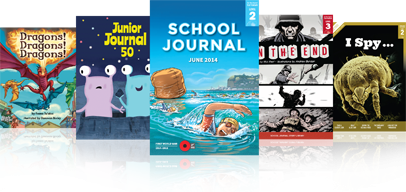
- Gold
- Purple
- 2
- 3
- 4
- 4
- 5
- 6
- 3
- 8
- English
- Science
- Social Sciences
- Technology
- Health and Physical Education
- Non-fiction
- Fiction
- None
- Nature of science
- Living world
- Material world
- Engage with science
- Use evidence
- Articles
- Stories
- Poems
- Plays
Search results
26 items - Showing 1 - 10
-
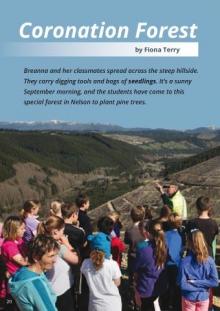
Coronation Forest
by Fiona Terry
-
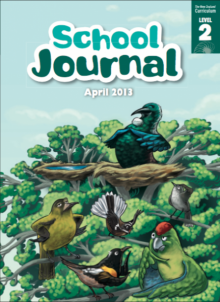
The Bat That Walks on the Ground
by Marlene Bennetts
Who knew that a bat could scuttle across on the ground like a mouse? This short article explains that, like the kiwi, bats didn’t need to escape predators before people arrived in New Zealand. The lesser short-tailed bats are able to fly, but they are in danger because of their reduced habitat and the introduction of predators.
-
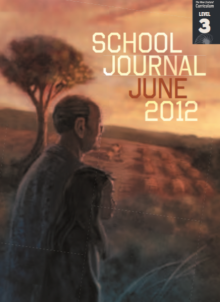
Kaupapa Kererū
by Ross Calman
Although the kererū is a fairly common bird, its numbers are actually declining. The article describes an initiative by Ngāi Tahu that is helping the threatened kererū population on Banks Peninsula.
-
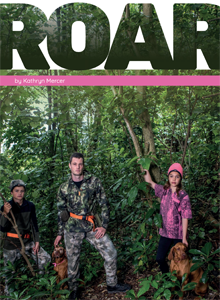
Roar
by Kathryn Mercer
Hunting is hugely popular in New Zealand’s rural communities, and it’s often done within families. This article will be welcome reading for students who already hunt, giving them the opportunity to share their knowledge with classmates. Those unfamiliar with the past-time are introduced to the basics, especially the “why” of hunting and the different skills and pleasures involved.
-
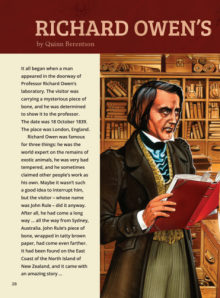
Richard Owen’s Giant Mystery
by Quinn Berentson
illustrations by Spike Wademan
Richard Owen was a British scientist of the early nineteenth century, most famous for his identification and naming of dinosaurs. This article reports on the role he played in unravelling the mystery of the moa and in identifying it as the largest bird ever known to humans. The nature of scientific endeavour is conveyed well, from the initial presentation of a bone fragment and through the research needed to have a new species recognised.
-
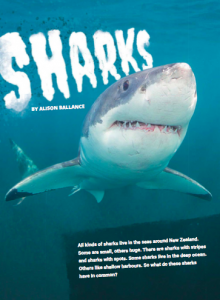
Sharks
by Alison Ballance
illustrated by Gavin Mouldey
This article provides information on sharks, focusing particularly on sharks found in New Zealand waters such as great white, rig, and deep-sea sharks.
-
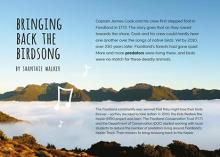
Bringing Back the Birdsong
by Shanthie Walker
For years, introduced predators have been killing birds along the Kepler Track in Fiordland. Students in the Kids Restore the Kepler project are working with the Department of Conservation and the Fiordland Conservation Trust to reduce the number of predators living in the area. Their mission: to bring birdsong back to the Kepler.
-
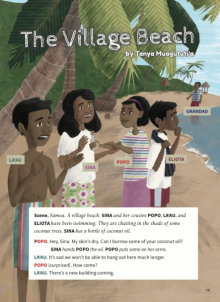
The Village Beach
by Tanya Muagututi'a
illustrated by Josh Morgan
"We won't be able to hang out here much longer... There's a new building coming"
-
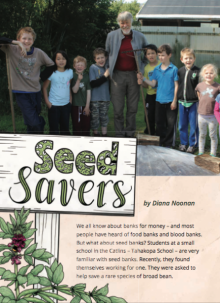
Seed Savers
What is a seed bank? And what is a seed saver?
-
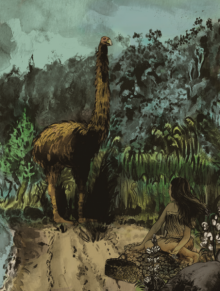
The Moa
by Lucy Buchanan
illustrated by Elliemay Logan
Winner of the 2017 Elsie Locke Writing Prize
"The brown-feathered bird stared down, studying her like prey. She wanted to run, to escape the terrifying gaze. The bird stepped back on its large clawed feet, keeping its small eyes on her. Ahorangi felt trapped beneath the glare, as if the bird were suffocating her, as if its claws were already scratching at her throat."










 Literacy Online home
Literacy Online home
